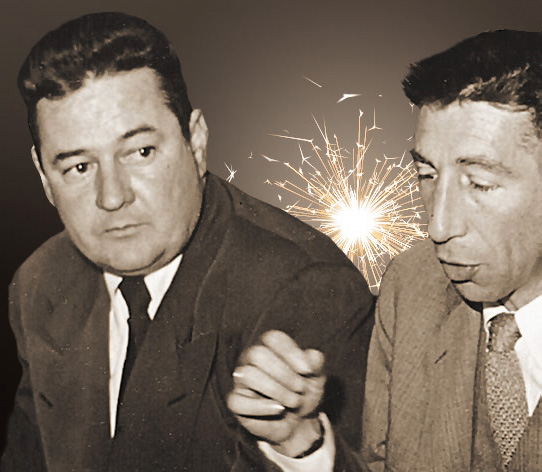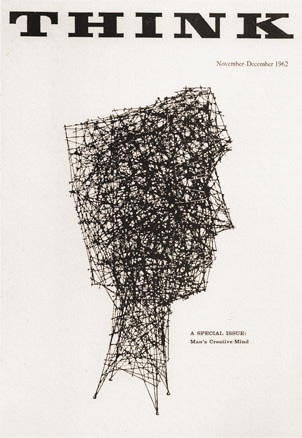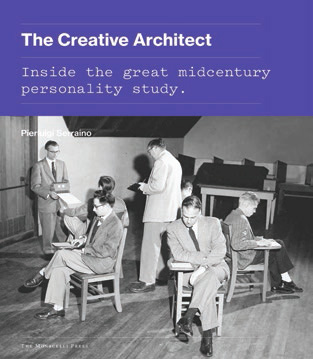It Starts with a Spark - Page 2
 |
Mr. Jones?
“[Subject] feels that it is ‘not flair’ but requires a ‘combination with hard work,’” his interviewer summarized.
Many of the questions aimed at unlocking the architects’ minds less directly.
What’s on your mind as you are falling asleep, Mr. Anshen?
“Sex.”
Mr. Jones?
“Office, and work in the office.”
His interviewer described Anshen as being overly interested in sex, bragging about his time as a teenager at the Sorbonne University in Paris when he had three mistresses, and first having sex at 14 in the backseat of his father’s seven-passenger Peerless touring car, which Bob was already driving.
Jones’ interviewer reported he had “no strong interest in sex.”
During the three days Anshen spent with his group of architects at a repurposed frat house near campus, Anshen—talkative, ebullient—was in his element. “That’s another one of the marvelous things about architecture—it’s just so much fun,” Anshen told his interviewer. “You can sit down with a group of architects and just always have a tremendous amount of fun.”
 |
The Anshen material includes audio recordings, and it is great to hear him speak in a voice that sounds theatrically trained, with a hint of New England. He turned many questions into occasions for stories.
Jones answered in a few words. Yes, he loved movies as a boy, but no, he couldn’t name a favorite star.
“It was difficult to determine his own feelings and thoughts about things that had happened to him,” his interviewer summarized, adding: “His statement that his first wife left him suddenly and unexpectedly, and he could not think of any reason why she did, indicates either an ingenuous lack of insight or a reluctance to face unpleasantness.”
His interviewer described Jones as “nervous and fidgety…ill at ease during the interview.” Even though he answered questions, the psychologist said, “somehow he managed to say less about himself than it seemed at the time.”
Breakout sessions had small groups of architects solving problems. What would man be like, they were asked, if he had three arms? What if you had designed an important project—and the client approved, but demanded one change that would violate the essence of the design?
 |
Make the change? Or walk?
Anshen came up with the solution that was adopted unanimously by his group. He pointed out that client and architect seemed “simpatico” on most points, and said there is more than one solution to a problem.
“Let us wipe the slate clean. We’ll rear back and we’ll just approach the problem with a fresh, new mind,” Anshen suggested.
“A more electric, marvelous solution might be found the second time,” he said.
But the architect should never compromise on a crucial design element, Anshen warned. “Because, if you compromise, you’re dead.”
Jones took little part in the group discussions.
Yet Anshen and Jones shared similarities. Both smoked heavily. Both had unhappy childhoods.
 |
|
|
Anshen, the youngest child with five sisters, grew up wealthy in Providence, Rhode Island, to parents who, like Eichler’s, were secular Jews. His father was a jeweler and was often on the road.
Anshen admired his dad, who would take him fishing in Maine, or to New York City—but not his mom. “She tried to dominate by being ill. And as a result I can’t stand ill people,” Anshen said.
Young Bob called himself a “dope,” wondered if he would ever be able to hold a job, and figured he was so wealthy he would never have to.
“I had just about everything I wanted…I had a car,” he said, plus servants. “So I had a fear of being a spoiled brat, and I knew that in many instances I was a spoiled brat and acted like one.’”
Jones’ folks split when he was six, and then Jones lived with his grandparents in the Los Angeles area. His brother and sister went with other relatives. Quincy’s brother died at age 11. Quincy loved his older sister and said she treated him like a mother.
Quincy moved a lot as a child, attending four different schools. As a teen, Jones reported being “very bashful—had difficulty finding things to talk about, especially with older persons, such as parents or friends.”
His closest friendship was with a Japanese-American boy whose family ran a nursery. Quincy spent much time with them, driving a nursery truck when he was 12, and “was entrusted to take money to the bank, as much as $5,000,” the interviewer summarized.




